How to treat perioral dermatitis in adults. Features of oral dermatitis and ways to get rid of it. Traditional treatment of pathology
Irritation of the skin around the mouth is common in adults and children. Unfavorable environmental conditions, cosmetics with a high content of heavy chemical elements and corticosteroids cause perioral dermatitis in 5% of cases.
Perioral dermatitis - causes
Scientists have not yet identified the source that provokes the development of the disease. The causes of perioral dermatitis are varied. Redness on the face can appear after severe stress, food poisoning, or during a disruption of the endocrine system. Men and women are susceptible to the disease. Hormonal imbalance can trigger the appearance of rosacea-like dermatitis. In women, it occurs after starting or stopping taking COCs. Some doctors associate the occurrence of oral disease with the following procedures:
Hand on heart, does your beauty closet bloat from time to time? Of course, we want to make our skin look good, pamper it, protect us from pollution and wrinkles. But does she need all these ingredients and supposed miracle products? Clean and caring, but please use a minimal program - it helps strengthen the skin.
Dermatologist Dr. med. In his practice in Munich, the dermatologist treats an increasing number of women who complain of dry, itchy or red skin. The causes of irritation vary greatly, but often the problem is too much attention! Frequent washing, cleansing and skin care products with fragrances and preservatives and too rich cosmetics are all stressful and can cause irritation. Now is the time to clean out your bathroom closet and maybe even give something up.
- installation of dentures;
- using toothpastes with large amounts of fluoride;
- the use of cosmetics containing large amounts of isopropyl myristate, sodium lauryl sulfate;
- allergic rhinitis, bronchial asthma, which are chronic;
- climate change from cool to hot;
- using creams and ointments with corticosteroids.
Dermatitis around the mouth in adults and children is often allergic in nature. Excessive use of paraffin- and petroleum jelly-based protectants causes redness. Hypersensitivity to cinnamon flavorings may cause an itchy rash. Disorders of the gastrointestinal tract, temporary decrease in humoral and cellular immunity, endocrine system disorders, exposure to ultraviolet radiation, and disorders of the nervous system can cause oral dermatitis.
Stop Perioral Dermatitis: 21 Days Without Makeup
At first I had some irritation and some red spots on my face.
Perioral dermatitis: when the skin is pressed
Pimples, blackheads and enlarged pores can be quite annoying. But what if the skin explodes? Best example: the so-called perioral dermatitis, which appears with redness and small nodules, perhaps even blisters, and occurs especially in the mouth, on the nasolabial folds and on the chin. The most common reaction: you wash more often, cream more, and cover your face with as much makeup as possible.Perioral dermatitis symptoms
The disease begins with the appearance of grouped nodules of red or red-pink color of a spherical shape. Symptoms of perioral dermatitis may be less or more severe depending on the patient's sensitivity to bacterial allergens. If the patient has a mild form of the disease, then pale pimples appear around the mouth. If the disease progresses, the color of the nodules changes to dark red, affecting the area of the nasolabial triangle and the nose. Steroid dermatitis on the face manifests itself as follows:
Skin disease leads to skin irritation
But you can't control this problem. On the contrary, it usually gets worse. Due to the variety of today's offerings, we tend to overfeed and frequent changes in products and manufacturers, here exfoliation, like a mask, moisturizer and rich night cream are skin extremely. honey. A professional skin analysis by a dermatologist helps to find out what the skin reacts to - only then can individual therapy begin.
Sometimes skin irritations are completely normal. honey. Anyone who constantly watches their skin critically and creams, smears or in the worst cases even presses on the smallest spots makes everything worse. "It's best to disinfect the area or apply a doctor-prescribed anti-inflammatory cream and wait until the pimple heals on its own."
- severe burning sensation in the chin and lips;
- small scales appear on the skin, falling off after a while;
- acne colonies appear;
- When opened, white liquid or pus comes out of the papules.
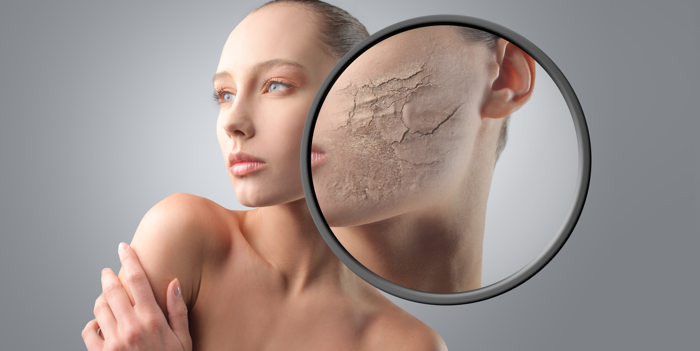
Perioral dermatitis - treatment
The first manifestations of this disease can be eliminated in a couple of days, but in order to completely get rid of its progressive form, you will have to spend a couple of months on therapy. Treatment of perioral dermatitis begins with replacing creams, shampoos and other cosmetics with chemically neutral ones. After this, the doctor waits a couple of days and then prescribes antibiotics, special ointments, sunscreens and antihistamines to the patient. Gels for psoriasis and acne will not help cure dermatitis.
For sensitive skin: avoid perfumes
What applies to the face also applies to the rest of the body. Especially in winter, this can cause itching. If you have a little patience, you will also reduce your emotional stress and thus get the best chance along with your advice to get back to normal life with your own skin.
Cleanser for healthy skin
Are these all hygienic muffles or is this a tendency that is actually a reasonable measure not to overstress the protective layer of the skin? Expert opinion: “Hygienic is the most important priority in terms of health”, Dr. Sabina Countersink. Our skin gets exposed, dirty and exposed to various substances on a daily basis, so it should be removed by cleansing it using cleansers such as oil or soap only sparingly and only in places where it is really needed: under the armpits, behind Intimate area and legs, so washing may not be the solution.You can reduce rashes in children and adults using products traditional medicine. Cooled infusion of chamomile, celandine, calendula or St. John's wort is used to treat reddened skin. If you are allergic to the listed plants, then apply a 1% solution of boric acid to small pimples. In case of oral ailments, special attention is paid to skin care. You should pat your face lightly after washing. Before leaving the house, you need to apply indifferent powders and neutral cooling gels to your skin.
Perioral dermatitis is an inflammatory condition of the skin around the mouth or nose that causes redness and small nodules and pustules. Around the mouth, the narrow edge remains largely free. Also on the chin and eyelids, perioral dermatitis may expand.
Simply make an appointment with one of our specialists. We will be happy to help you!
Perioral dermatitis - Kronberg - Frankfurt - Rhine-Main - Taunus.
Who is affected by perioral dermatitis?
Typically, perioral dermatitis is initially reddened by small pustules that begin in the crease between the nose and lips or around the mouth. Redness may also shed. Sometimes we are talking about burning or, less commonly, itching in the affected area.Ointment for perioral dermatitis
When treating skin ailments, antibiotic-based creams work well. The most famous ointment from oral dermatitis– metronidazole. It is applied to areas affected by the disease 2 times a day. Erythromycin has a similar effect. It is rubbed into the chin and lip area 2-3 times a day. If inflammatory process does not stop, the doctor prescribes facial gels with pimecrolimus. The product must be used carefully, because... it reduces local immunity.
Perioral dermatitis occurs primarily in women aged 15 to 45 years, but can occur sooner or later. The cause is unclear, but its development is often preceded by topical steroid therapy. The supposed barrier function of skin is that it can be bypassed by various skin care products.
What should you consider for perioral dermatitis?
It is very important not to use steroid creams. They often cause premature dermatitis and aggravate the disease with subsequent use. In any case, you should have a suspicion of perioral dermatitis, clarified by a dermatologist, and one or similar skin symptoms may cause, however, treatment will have to be different.

Diet for perioral dermatitis
A vegetarian diet is considered ideal. Products classified as allergenic should be excluded from the menu. The diet for perioral dermatitis should be balanced, i.e. include boiled meat, porridge with water, vegetables. Fruits are rarely given. Spicy, fried, fatty and sweet foods should be removed from the diet. If a child under 10 years of age is being treated for an illness, all dairy products are excluded from the menu. The diet should be followed for 3-4 months after the symptoms of the disease disappear.
In principle, all harsh detergents or care lotions should be avoided. Facial cleansing is best done with warm water or very gentle cleansing lotions. Additionally, if possible, you should avoid creams and cosmetics. A dermatologist can recommend suitable creams that can have a positive effect on perioral dermatitis. Sometimes black tea envelopes also help relieve inflammation. Overall, perioral dermatitis is unfortunately a fairly long-lasting skin condition: it can develop slowly over several months and spread and return after a period of absence.
Perioral dermatitis in children
The first symptom of the onset of the disease in a child is a rash around the mouth. It may appear on the chin while eating and then disappear. When perioral dermatitis in children begins to progress, the redness becomes persistent. If the disease is not treated, the areas affected by dermatitis will become blue. Dilated small vessels become visible. If a doctor has diagnosed this disease in a child, you must:
Luckily, it doesn't leave any traces. Although there are several theories about the cause of rosacea, perioral dermatitis is based on too many skin care products - often moisturizer on dry skin. Topical corticosteroids are a non-treatment; In cases of mild perioral dermatitis, even zero therapy may be required. Verena Isaac.
Rosacea is an inflammatory disease of the face in adults. The course is chronic and involuntary, and different forms or phases can be distinguished, depending on the underlying symptom concerned. Josef Aubock from Kepler University Hospital Linz. Another more advanced form is rosacea papulopustulosa, with papules and pustules in the foreground. Although appearance may resemble the appearance of acne, the two clinical pictures should be clearly distinguishable. “Acne is a disease of the sebaceous glands,” says Univ.
- limit baby's contact with water;
- remove fatty, salty and sweet foods from the menu;
- stop using uncertified medical centers cosmetics.
The disease occurs very rarely in children. It is provoked by hormonal changes in the body, the use of sprays or creams with glucocorticoids. During hormonal changes in newborns, the disease goes away within a month. If the rash is caused by the use of hormonal medications, then the treatment period, as in the case of adults, will be 3-4 months.
Therefore, comedones are not classified as discolored in rosacea. The typical distribution is centrofacial, that is, the nose and glabella, but also the cheeks or chin. For heavier gradients, the chest or décolletage may suffer, says Aubok. However, a particular form of rosacea, rhinophyma, is limited to the nose and affects especially older men: “Through hyperplasia of the sebaceous glands it occurs with the formation of phymates, hence the humpbacked, bumpy nose,” explains Aubok. If rosacea is based on increased lymphatic activity, this form is called Morbihan disease, which causes redness and swelling of the face, including acute swelling of the eyelids.

Perioral dermatitis during pregnancy
The disease begins with the appearance of small, watery pink or red papules. Perioral dermatitis during pregnancy does not pose a threat to the child. During this period, treatment of the disease cannot be complete. The disease can appear with gynecological disorders caused by a temporary conflict between the cells of the mother and fetus. The development of dermatitis is facilitated by a woman's genetic predisposition. Therapy begins in the second trimester with the use of antibacterial ointments.
Even the eyes can be affected in about 30 to 50 percent of cases. The conjunctiva is red from telangiectasia. In this case, patients should also be referred to an ophthalmologist, and systemic tetracycline therapy is required, says Wolk-Platzer. Overall, the prevalence is around two to five percent, with the majority of those affected being over 80 years of age. In women, rosacea can begin early, around the age of one year; in men, the frequency peaks around.
Rosacea: causes multifactorial. The reasons are still unclear and are likely multifactorial: “ Possible reasons are a compromised immune system, neurogenic or neuroinflammatory inflammation or altered inflammatory mechanisms and altered blood and lymphatic vessels,” says the expert.
Video
Oral dermatitis is a skin disease that affects 1% of the world's population.
This is not such a big number, but a person who is faced with this problem experiences discomfort in the area where dermatitis spreads.
Fair people suffer more, says the dermatologist. Another important factor in the formation of rosacea is bacterial overgrowth of the skin. Other possible stimuli include cosmetics, soap, heat and cold, tea, coffee and spicy foods. In this case, avoiding or eliminating the underlying triggers may improve symptoms. Therapy: local and systemic.
Treatment for rosacea consists of various topical options as well as systemic therapy. "Few medications are approved for rosacea; many of the common treatments are not relevant," Aubock says. Established topical treatments are metronidazole or azelaic acid, but topical antibiotics such as erythromycin or clindamycin may also be used. Additionally, calcineurin inhibitors can be used, which are actually approved for atopic dermatitis and eczema. “Due to the immunosuppressive effect, inflammation and therefore redness returns,” explains Aubok.
Most often, facial skin lesions occur in women of reproductive age.
Oral dermatitis is also called perioral dermatitis because this disease affects the areas of skin near the mouth. The disease is characterized by the appearance of redness and small pimples.
Over time, the area of distribution of papules increases noticeably. The patient experiences itching, burning and psychological discomfort.
Features of the development of the disease
"If there is a high level of suffering, systemic therapy may also be prescribed," Aubock says. The drugs of choice are tetracyclines such as lymycycline or doxycycline at a low dose of 40 mg. "This dose is not an antibiotic, but is still anti-inflammatory," he explains. Therapy is carried out individually to monitor the patient. After eight weeks of tetracyclines, topical maintenance therapy such as metronidazole or azelaic acid is used to slow relapse. If intolerance or pregnancy occurs, a macrolide such as erythromycin may be used instead.
Symptoms
- Location. First of all, acne appears in the mouth area, around the lips, wings of the nose and on the chin. The redness stands out as a clear line above the lips and contrasts against the background of healthy skin. In this case, acne accumulates symmetrically on both sides of the lips and nose.
- The nature of localization. In oral dermatitis, pimples are located in clusters on the affected areas of the skin. At the beginning of the disease, single pimples appear, then their occurrence occurs almost simultaneously. In the photo you can notice that the papules are localized in groups. As the disease progresses, pimple colonies resemble islands, and as the old ones dry out, new ones appear.
- Appearance. Papules stand out above the surface of the skin, the head of the pimple is filled with purulent fluid. At the beginning of the disease, the inflammations are red in color, then they acquire a brown tint and merge into a solid spot. After opening, crusts form at the site of the acne, accompanied by peeling, and in their place pigmented spots remain on the skin.
- Feelings. In addition to external signs, at the beginning of the disease the patient feels irritation, severe itching, and a desire to scratch the inflamed area of the skin. All this is accompanied by a feeling of tightness of the facial skin.
- Consequences. In the absence of treatment or when incorrect treatment methods are used, pustular skin lesions and weeping wounds occur that become chronic.
If you have similar symptoms to other skin diseases and doubts, timely consultation with a dermatologist is necessary. Incorrect treatment can make the situation worse.
Retinoids are also suitable therapy. However, topical corticosteroids are contraindicated. Cortisone on the face is a non-guest. This applies to steroid-induced rosacea and telangiectasia in the long term, says Aubok. This also applies to perioral dermatitis, which disappears in the short term with local cortisone administration, but returns at increasingly shorter intervals and therefore leads to steroid dependence.
Perioral dermatitis is an acne-like, rosacea-like skin change, most commonly perioral, periocular, or perinasal, or a combination. Prevalence varies by gender. Six percent are female dermatology patients, but only 0.3 percent are male dermatology patients. This is explained by the fact that women use more cosmetics than men: “Men are catching up,” Aubok notes.
Causes
There is no definite answer to the question of where oral dermatitis occurs. Nevertheless, certain patterns have been identified in which cases and circumstances the risk of the disease increases:
- reproductive age of women;
- using a large number of cosmetics of different brands and manufacturers (washing gels, scrubs, tonics, moisturizing creams);
- use of drugs and ointments with hormones (corticosteroids);
- taking oral contraceptives;
- use of cosmetic products containing fluoride (mouth rinses, toothpastes);
- cosmetic procedures (facial scrubbing, laser resurfacing, peeling) that severely injure the surface layer of the skin;
- weakened immunity;
- endocrine system disorders;
- disorders in the digestive system;
- chronic infections in the body;
- excessive exposure to ultraviolet radiation;
- nervous breakdowns, depression, stress.
- predisposition to allergies.
How to treat correctly
Oral dermatitis on the face can be treated within 2-3 months; if the disease is advanced, complete recovery will take much longer.
Pay attention! You should never self-medicate! A timely visit to a specialist will help you choose the right medications, avoid complications and prevent relapse.
When treating perioral dermatitis, you can use both traditional medicine and folk remedies. Treatment can be divided into several stages:
- withdrawal “therapy”;
- drug treatment;
- body restoration and prevention.
Stage 1: Withdrawal Therapy
First aid for skin lesions with perioral dermatitis is to exclude all irritating agents that affect the affected skin of the face:
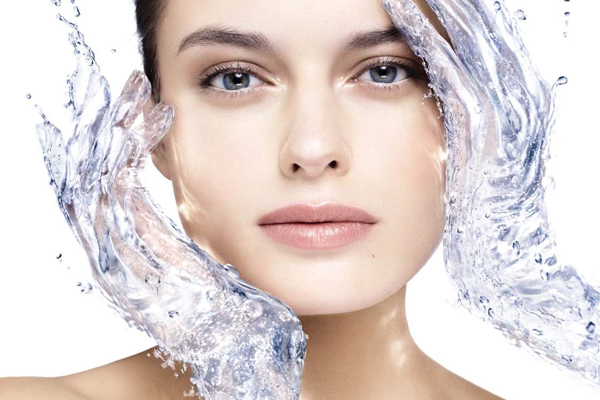
Stage 2: drug treatment
In order to completely eliminate oral dermatitis, treatment must be carried out with medications.
The second stage includes the following treatment regimen:
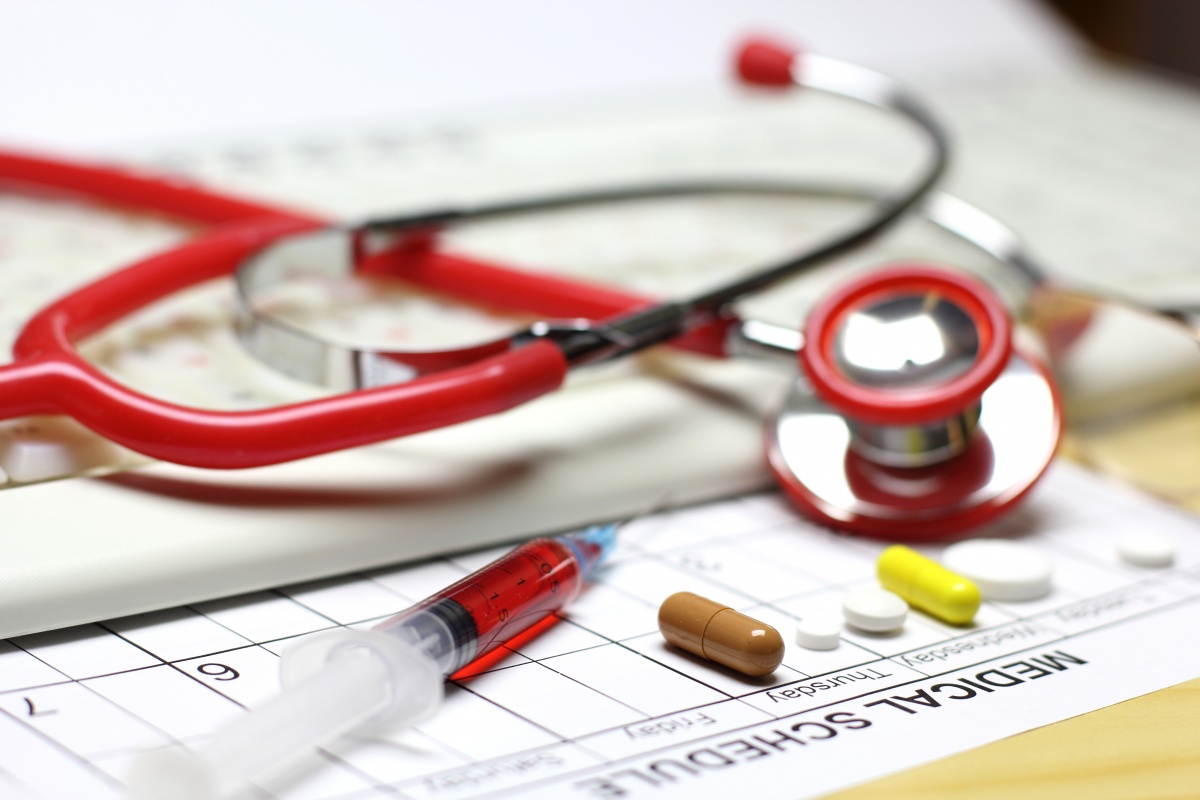
Stage 3: supportive care and preventive measures
It is known how to cure oral dermatitis, but what to do to avoid relapse of the disease? To do this, it is necessary to take preventive measures. A few golden rules to follow:
- Restore the body.
- Follow your daily routine.
- Take vitamins.
- Pay attention to proper facial hygiene.
After successful treatment, it is necessary to restore all body systems,  be thoroughly examined and treat chronic diseases. Since the causes of oral dermatitis are often hidden precisely in chronic infections of the body.
be thoroughly examined and treat chronic diseases. Since the causes of oral dermatitis are often hidden precisely in chronic infections of the body.
Do not forget that disruption of sleep patterns and daily routines has a negative impact on your overall health. A lack of vitamins affects not only the condition of the skin, but also a person’s ability to work, increasing fatigue and irritability.
Therefore, it is important to fill the diet with a variety of foods so that the body receives the required amount of sugars, proteins, elements such as iodine, iron, and vitamin B.
A mandatory measure for the prevention of oral dermatitis is proper facial skin hygiene: selection of cosmetics of the same brand, suitable in composition, non-irritating, well nourishing and moisturizing the skin, without creating an oily film on the surface of the epidermis.
Pay attention! Decorative cosmetics should be used with caution! Poor quality products can negate all treatment. At first after treatment, if possible, you should stop using decorative cosmetics in large quantities!
Traditional methods of treatment
Treatment of oral dermatitis can also be carried out using traditional medicine methods, using herbs as an additional means of getting rid of the disease.

Effectively use chamomile infusion. A solution of herbs and boric acid is used as a lotion on damaged areas of the skin. Instead of chamomile, you can use celandine, calendula, and St. John's wort.
Medicines: what ointments and antibiotics can be used in treatment
Antihistamines help neutralize allergic reactions, relieve irritation and puffiness of the face.
For oral dermatitis, antibiotics are mandatory. At first, after starting treatment, the rashes may become larger, but after a while there will be an improvement: pathogenic flora (streptococci, staphylococci) develops in the affected skin area, which requires immediate destruction.
It is also necessary to use external antibacterial ointments based on metronidazole - this is the most effective antibiotic.
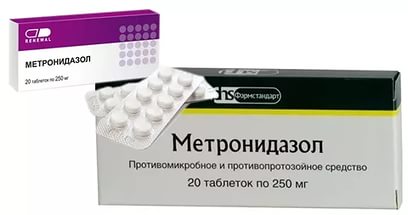
Elidel ointment should be used with caution. This remedy causes a powerful anti-inflammatory effect. It is prescribed when the disease occurs at a long stage and other means do not help.
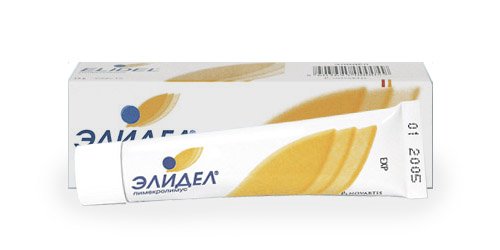
Below is a table of medications that can be used to treat oral dermatitis.

Treatment for oral dermatitis is gradual, and patients should be prepared for a long period of time to fully recover.
Therefore, it is important not to chase a quick effect, but to follow all the doctor’s recommendations, pay due attention to nutrition, daily routine and facial skin hygiene. If you follow all stages of treatment and recommendations, you can be sure that recovery will come soon.
How to get rid of dermatitis forever?
Dermatitis is a very unpleasant disease that can progress, resulting in a rash covering 70-80% of the body surface. Which leads to a chronic form.
Red blistering blisters on the skin, itching, cracked heels, peeling skin... Are all these symptoms familiar to you firsthand!? But perhaps it would be more correct to treat not the effect, but the cause? We recommend reading the secret of curing DERMATITIS from Elena Malysheva.




